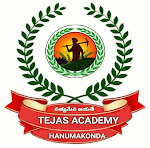1. Extension Education primarily focuses on:
a) Urban areas
b) Industrial development
c) Rural development
d) Economic growth
Answer: c) Rural development
2. The primary aim of Extension Education is:
a) Transfer of knowledge
b) Agricultural productivity
c) Improving rural living standards
d) Conducting research
Answer: c) Improving rural living standards
3. The word "Extension" is derived from:
a) Latin
b) Greek
c) French
d) German
Answer: a) Latin
4. Which is the main principle of Extension Education?
a) Compulsion
b) Voluntary participation
c) Profit-making
d) One-way communication
Answer: b) Voluntary participation
5. The process of teaching farmers to adopt new technology is called:
a) Innovation
b) Extension teaching
c) Rural marketing
d) Diffusion
Answer: d) Diffusion
6. Which is NOT a method of Extension Education?
a) Individual contact
b) Group contact
c) Mass media
d) Laboratory experiments
Answer: d) Laboratory experiments
7. "Learning by doing" is the principle of:
a) Formal education
b) Vocational training
c) Extension education
d) Classroom teaching
Answer: c) Extension education
8. Which of the following is a group contact method in Extension Education?
a) Home visit
b) Field demonstration
c) Public meeting
d) Poster
Answer: c) Public meeting
9. The concept of "Rural Reconstruction" was introduced by:
a) Mahatma Gandhi
b) Rabindranath Tagore
c) Swami Vivekananda
d) Jawaharlal Nehru
Answer: b) Rabindranath Tagore
10. Which of these is an audio-visual aid used in Extension Education?
a) Radio
b) Posters
c) Films
d) All of the above
Answer: d) All of the above
11. The first step in planning an extension program is:
a) Evaluation
b) Goal setting
c) Identifying problems
d) Resource allocation
Answer: c) Identifying problems
12. Which of these is an example of mass communication in Extension?
a) Farmer meetings
b) Television broadcasts
c) Field visits
d) Personal letters
Answer: b) Television broadcasts
13. Which method is best for teaching practical skills in Extension?
a) Lecture
b) Role play
c) Demonstration
d) Discussion
Answer: c) Demonstration
14. Which of the following is NOT a characteristic of Extension Education?
a) It is voluntary
b) It is informal
c) It is time-bound
d) It is based on practical applications
Answer: c) It is time-bound
15. The T&V system in Extension stands for:
a) Training and Volunteering
b) Teaching and Validation
c) Training and Visit
d) Teaching and Visuals
Answer: c) Training and Visit
16. Who is considered the "Father of Extension Education"?
a) Swaminathan
b) J.P. Leagans
c) Albert Howard
d) Norman Borlaug
Answer: b) J.P. Leagans
17. A "Farmers' Field School" is an example of:
a) Mass contact method
b) Individual contact method
c) Group contact method
d) None of the above
Answer: c) Group contact method
18. Which of the following is a mass communication tool in Extension?
a) Newsletter
b) Farm visit
c) Group meeting
d) Result demonstration
Answer: a) Newsletter
19. The "Kisan Call Center" initiative in India aims to:
a) Provide real-time agricultural advice
b) Distribute free seeds
c) Organize farm visits
d) Monitor crop diseases
Answer: a) Provide real-time agricultural advice
20. The major role of an Extension worker is to:
a) Conduct research
b) Provide loans to farmers
c) Transfer technol
ogy and build capacity
d) Sell farm products
Answer: c) Transfer technology and build capacity


